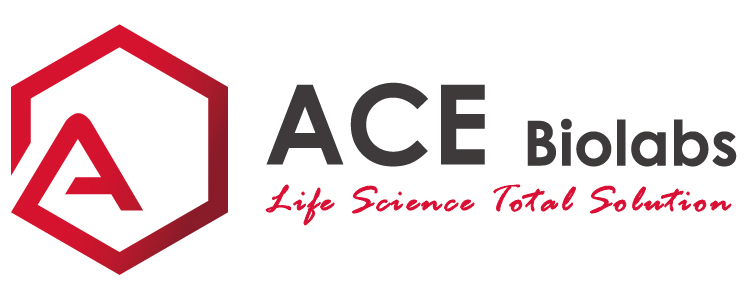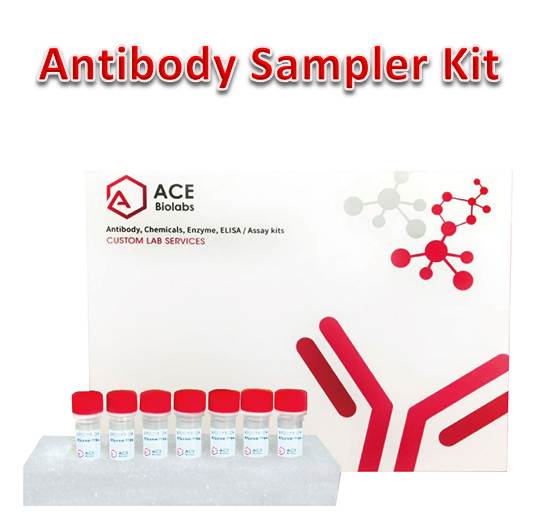Antibody, Antibody Sampler Kit
Initiator Caspases Antibody Sampler Kit
- Catalog Number : AK0176
- Number :
-
Size:
Qty : - Price : Request 詢價
- Stock : Request
Introduction
Apoptosis is a regulated physiological process leading to cell death. Caspases, a family of cysteine acid proteases, are central regulators of apoptosis. Initiator caspases (including 2, 8, 9, 10 and 12) are closely coupled to proapoptotic signals, which include FasL, TNF-α, and DNA damage. Once activated, these caspases cleave and activate downstream effector caspases (including 3, 6 and 7), which in turn cleave cytoskeletal and nuclear proteins such as PARP, α-fodrin, DFF and lamin A; inducing apoptosis. Formation of a death-inducing signaling complex (DISC) around the receptors for death factors, including FasL and TNF-α, is essential for receptor-mediated apoptosis. Upon ligand activation, Fas and TNF-R1 associate with death domain (DD) containing adaptor proteins FADD (Fas associated death domain) and TRADD (TNF-R1 associated death domain). In addition to a carboxy-terminal DD, FADD contains an amino-terminal death effector domain (DED) that binds to DEDs and activates initiator caspase 8 (FLICE, Mch5, MACH) and caspase 10 (FLICE2, Mch4). TRADD does not contain a DED and therefore must associate with FADD in response to TNF-R1 driven apoptosis. Caspase-9 (ICE-LAP6, Mch6) is activated through the mitochondrial-mediated pathway. Cytochrome c released from mitochondria associates with procaspase-9 (47 kDa)/Apaf-1. Apaf-1 mediated activation of caspase-9 involves proteolytic processing resulting in cleavage at Asp315 and producing a p35 subunit. Another cleavage occurs at Asp330 producing a p37 subunit that can amplify the apoptotic response. Caspase-2 (Nedd2/ICH-1) is the nuclear apoptotic respondent to cellular genotoxic stress or mitotic catastrophe. The procaspase is cleaved at Asp316, producing a 14 kDa fragment and a 32 kDa prodomain/large subunit. Subsequent processing at Asp152 and Asp330 produces an 18 kDa large subunit and a 12 kDa small fragment. Activation occurs upon recruitment to a complex containing a p53-induced death domain protein, PIDD. This suggests that caspase-2 can be a nuclear initiator
General Information
| Reactivity | Human |
|---|---|
| Application | WB, ELISA |
| Host | Rabbit |
| Clonality | Polyclonal |
| Conjugate | HRP,Non-conjugated |
| Storage instruction | Store at -20℃. Avoid freeze / thaw cycles. |
| Research topic | Regulation of Apoptosis |
PRODUCT INCLUDES
|
Cat No. |
Product name |
Quantity |
Applications |
Reactivity |
Host |
|
A340466 |
CASP9 Polyclonal Antibody |
20μL |
WB, IHC, IF, ELISA |
Human, Mouse, Rat |
Rabbit |
|
A340458 |
CASP3 Polyclonal Antibody |
20μL |
WB, IHC, IF, ELISA |
Human, Mouse, Rat |
Rabbit |
|
A340456 |
CASP2 Polyclonal Antibody |
20μL |
WB, IHC, ELISA |
Human |
Rabbit |
|
A340464 |
CASP8 Polyclonal Antibody |
20μL |
WB, IHC, ELISA |
Human, Mouse, Rat |
Rabbit |
|
A1013s |
Goat Anti-Rabbit IgG (H+L) (peroxidase/HRP conjugated) |
120μL |
WB, ELISA |
Rabbit |
Goat |




![Dibenzo[b,d]furan-4-carboxylic acid](/img/nophoto.jpg)


.png)